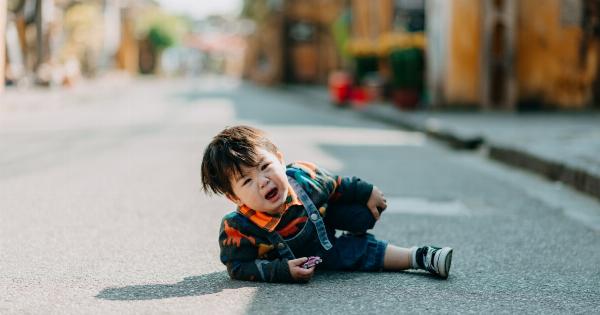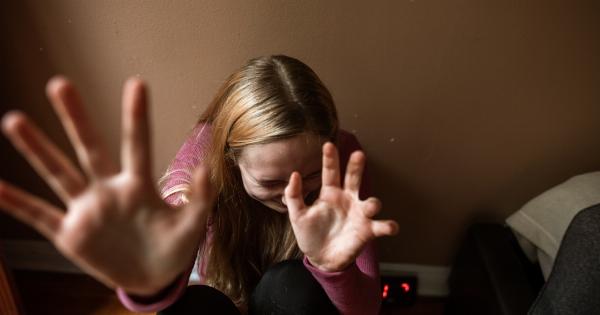Domestic violence is a widespread issue that affects millions of people around the world.
While much attention is given to the immediate victims of this devastating crime, which are often the adults involved in the abusive relationship, there is another group of individuals whose suffering is often overlooked – the children of domestic violence. These innocent bystanders are often called the “silent victims” as they endure the consequences of the violence and abuse that unfolds within their own homes.
The Impact of Domestic Violence on Children
Children who witness domestic violence are subjected to numerous negative effects that can have lasting consequences on their physical, emotional, and psychological well-being.
They frequently experience fear, anxiety, and trauma as a result of the violence they witness between their caregivers. The constant exposure to violence can lead to mental health issues such as depression, anxiety disorders, post-traumatic stress disorder (PTSD), and even suicidal tendencies.
Moreover, these children often suffer from low self-esteem and have difficulty establishing healthy relationships later in life.
They may internalize the violence they witness and perpetuate the cycle of abuse themselves or become withdrawn and socially isolated. In some cases, the trauma experienced during childhood can manifest in physical symptoms such as headaches, stomachaches, and sleeping problems.
Invisible Scars: Emotional Impact on Children
While the physical wounds of domestic violence are visible, the emotional scars borne by children are often invisible to the outside world. These children grow up in an environment characterized by tension, fear, and instability.
They may witness their parent being verbally or physically abused, live in a constant state of hypervigilance, or be exposed to the aftermath of violent incidents.
The trauma of domestic violence can disrupt the typical development of children. They may have difficulties in school due to the ongoing stress they experience at home or struggle with attachment and trust issues.
Additionally, witnessing violence can normalize aggressive behavior, leading to the belief that violence is an acceptable way to resolve conflicts.
The Interplay of Role Models and Long-term Outcomes
Parents are the primary role models in a child’s life. However, when children are exposed to domestic violence, their perceptions of healthy relationships become distorted.
They may come to view violence, anger, and control as acceptable behaviors in intimate partnerships. This can lead to a vicious cycle where children who grow up in violent households are more likely to become either victims or perpetrators of domestic violence in adulthood.
The long-term effects on children who witness domestic violence can persist into adulthood.
Research has shown that they are at a higher risk of engaging in substance abuse, becoming involved in criminal activities, and experiencing difficulties in their own intimate relationships. Breaking this cycle requires recognizing the damaging impact of domestic violence on children and providing them with access to support systems that can help them heal and learn healthy relationship dynamics.
The Importance of Intervention and Support
In order to break the cycle of violence and mitigate the negative consequences on children, intervention and support systems are crucial.
Domestic violence services should not only focus on the immediate safety of the adult victim but also provide resources for the children affected by the abuse. Counseling, therapy, and support groups specifically designed for children who have witnessed domestic violence can help them process their experiences, build resilience, and learn healthy coping mechanisms.
Furthermore, it is essential for schools and educational institutions to be aware of the signs of domestic violence and provide a supportive environment for children who may be silently suffering.
Teachers and other school staff should receive training on recognizing and responding to the needs of children affected by domestic violence.
The Legal Aspect: Protecting Children
From a legal standpoint, protecting children from domestic violence requires a comprehensive approach. Laws should be in place to safeguard the well-being of children and hold the perpetrators accountable.
This includes providing child protection orders, offering supervised visitation between the abusive parent and the child, and ensuring child custody decisions take into account the safety and welfare of the child.
In addition, preventative measures such as public awareness campaigns, educational programs on healthy relationships, and early identification of families at risk can play a significant role in reducing the prevalence of domestic violence and the associated impact on children.
Conclusion
Children who witness domestic violence are indeed the silent victims, often living in fear and trauma within the confines of their own homes.
The impact of this violence on their emotional, psychological, and physical well-being can be long-lasting and debilitating. Breaking the cycle of violence requires acknowledging the critical role children play in this issue and providing them with the necessary support systems to heal and thrive.































